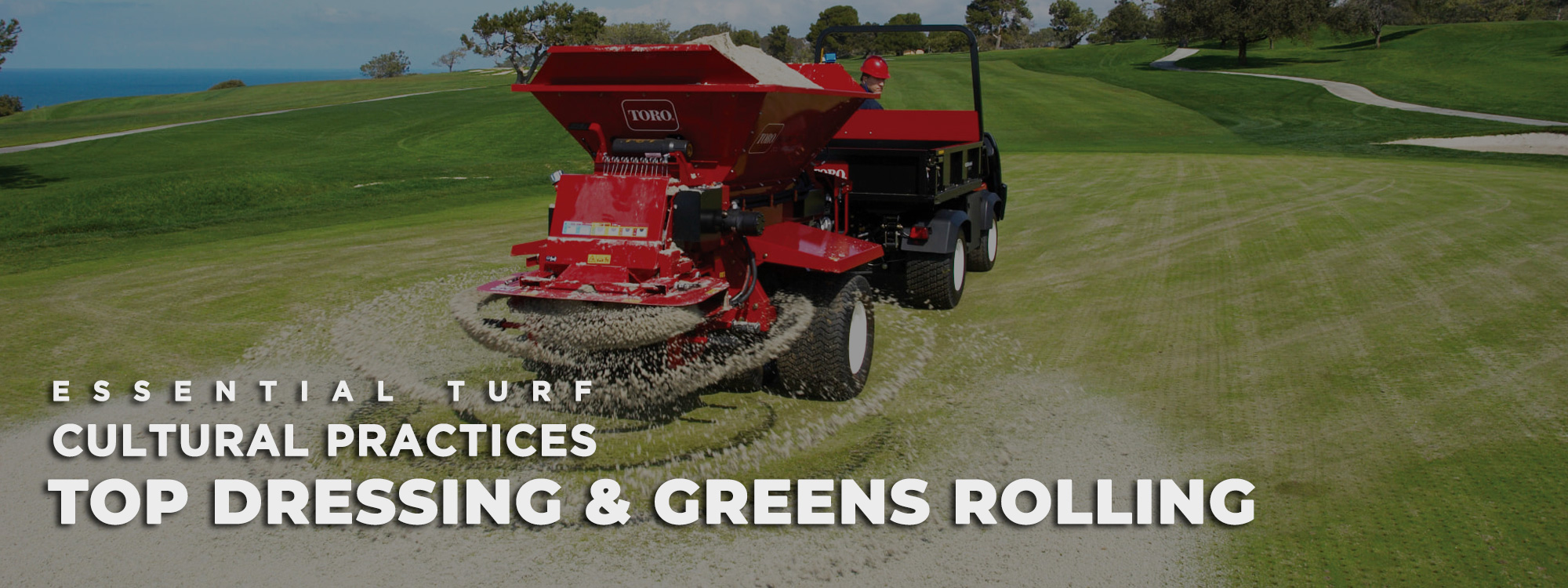Golf course maintenance pose a number of unique challenges to Golf Superintendents.
- During the year, soil conditions can become very compact from the movement of maintenance machinery, Golf Carts and foot traffic, creating unfavorable growing conditions.
- Areas that receive a high level of foot traffic, such as a putting green, deteriorate over time due to soil compaction, thatch accumulation, and day-to-day stress
- The goal is to have a healthier plant by relieving soil compaction, reducing thatch, and improving water and air exchange.
The following cultural practices provide an opportunity for both turf and soil to recover from daily play, promote turf density and health and helps in providing a good quality playing surface.
- Top Dressing
- Rolling of Greens
Our Previous Blogs in this topic given below:
- Mowing & Verticutting (http://www.ipi-india.com/blog/essential-turf-cultural-practices-mowing-verticutting/)
- Aeration (http://www.ipi-india.com/blog/essential-turf-cultural-practices-aeration/)
TOP DRESSING
Top Dressing is an important Cultural Practice by which a layer of sand is applied to the turf surface and then incorporated into the turf by dragging or brushing it in.
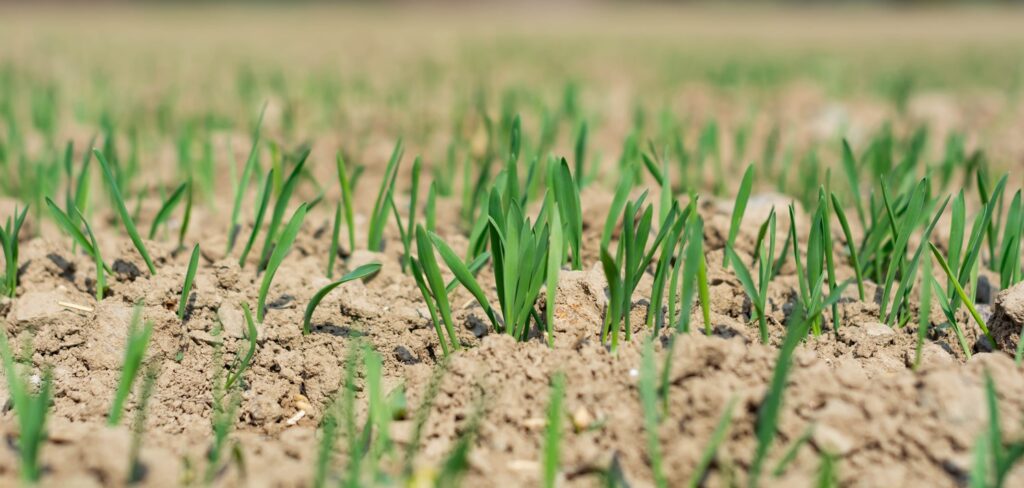
- Topdressing is performed on established turf to smoothen the playing surface, improve surface firmness, control thatch and grain, promote recovery from injury and possibly change the physical characteristics of the underlying soil, root zone overtime.
- Top Dressing on newly established turf partially covers and stabilizes the newly planted material, smooths gaps that result from sodding, and minimizes turf grass desiccation.
TOP DRESSER:
- Precise topdressing achieved with ease
- Versatile for topdressing and material handling jobs
- Wireless, electronic controller available

Topdressing programs are unique and need to work for what you are trying to achieve.
- If the objective of topdressing is to change the characteristics of the underlying soil profile and root zone, then a heavy topdressing program following numerous deep core removal operations over a period of years is required.
- If thatch management is the main objective, then the rate of thatch accumulation governs the amount and frequency of topdressing.
- On putting greens, it is common for courses to apply light, frequent applications of topdressing sand. Light and frequent topdressing program establishes smooth, uniform playing surfaces, controls thatch and grain, and promotes recovery from injury. This supplemental application of sand is also important to do regularly in order to reduce layering in the thatch profile and maintain good water-infiltration rates. This process can be done one to two times per month.
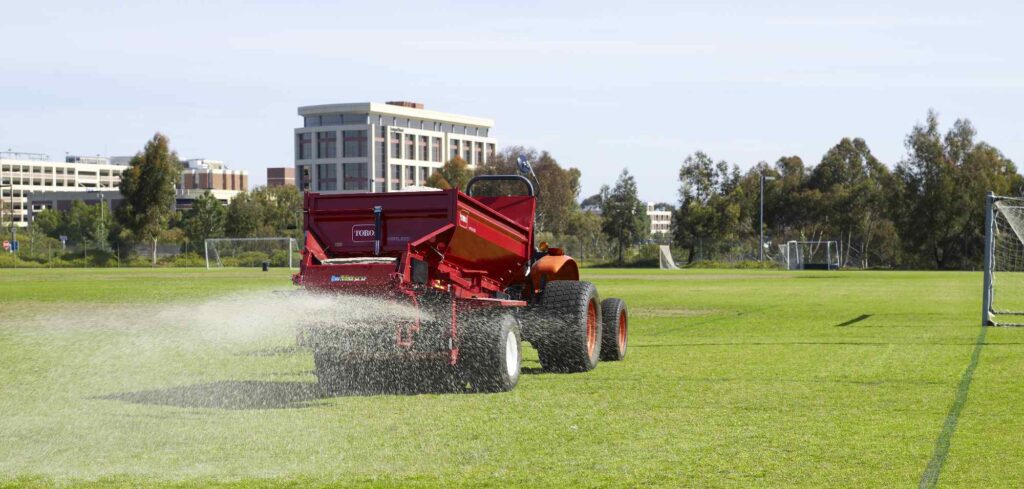
Topdressing Frequency and Rate of Application: The frequency and rate of topdressing depend on the objective. Rates can vary based on the various cultural practices that were performed but should not exceed the capacity that the turf canopy can absorb.
After coring and heavy verticutting:
- moderate to heavy topdressing helps to smooth the surface, fill cored holes, and cover exposed roots resulting from these two processes.
- Irregular play surfaces or soil profile renovation requires frequent and relatively heavy topdressing.
- Rates ranging from 0.125 to 0.25 inch (2 to 4 cubic yards of soil per 5,000 ft2) are suggested.
- However, if the capacity of the turf to absorb the material is limited, less material should be used to prevent smothering the turf.
If thatch management is the main objective
- The rate of thatch accumulation governs the amount and frequency of topdressing.
- Thatch layering of 0.25 to 0.5 inch on golf greens is desirable, but it is necessary to dilute this layer with sand.
- The relatively thin thatch layer cushions (holds) the approaching golf shot better and also helps to protect turf crowns from traffic. When thatch is not excessive (≤ 0.5 inch), approximately 27 cubic feet ( 0.76 cbm ) per 5,000 Sq.Ft of topdressing is suggested at least once per month during the growing season.
- If over time this relatively light rate is not maintaining or reducing the thatch layer, then the frequency of application and the topdressing rate should be increased.
If the thatch layer exceeds 0.5 inch
- then coring or deep verticutting is required to remove a portion of the thatch material. This should be followed with heavy topdressing.
- A distinct thatch (stem) layer greater than 0.5 inch that does not contain any sand must be prevented or eliminated.
- Such thatch layers either become hydrophobic (repel water) or create a perched water table at the surface that encourages roots to remain in the thatch layer and not grow down into the soil.
- In either situation, the turf is more susceptible to pests, mechanical damage, and environmental stresses.
If the objective of topdressing is only to provide routine smoothing of the playing surface:
- A light, frequent topdressings are suggested. The surface irregularities of the green are reduced and the area is somewhat leveled when a mat is used to drag sand into the turf canopy following topdressing.
- Topdressing with 0.5 to 1 cubic yard per 5,000 ft2 of green surface every two to four weeks provides a smoother, truer playing surface.
- Light topdressing is also performed approximately 10 to 14 days prior to major club tournaments to increase green speed and provide a smoother putting surface.
- In addition, frequent, light topdressing should be applied to new greens every two to four weeks to cover stolons and to smooth the surface, until complete coverage or the desired smoothness is achieved.
If the underlying soil profile / root zone of the play surface (green or tee) is unsatisfactory
- it must be determined whether to rebuild the greens / tees or try to slowly change its composition through aggressive coring and topdressing.
- If the soil problem is severe, then reconstruction should be considered. With the introduction of deep core aerifiers, the process of changing the underlying soil characteristics may be expanded.
- Deep coring once per year followed by heavy topdressing with desirable sand should be practiced to improve poorly-draining greens.
- Between these corings, conventional aerification and topdressing should still be performed.
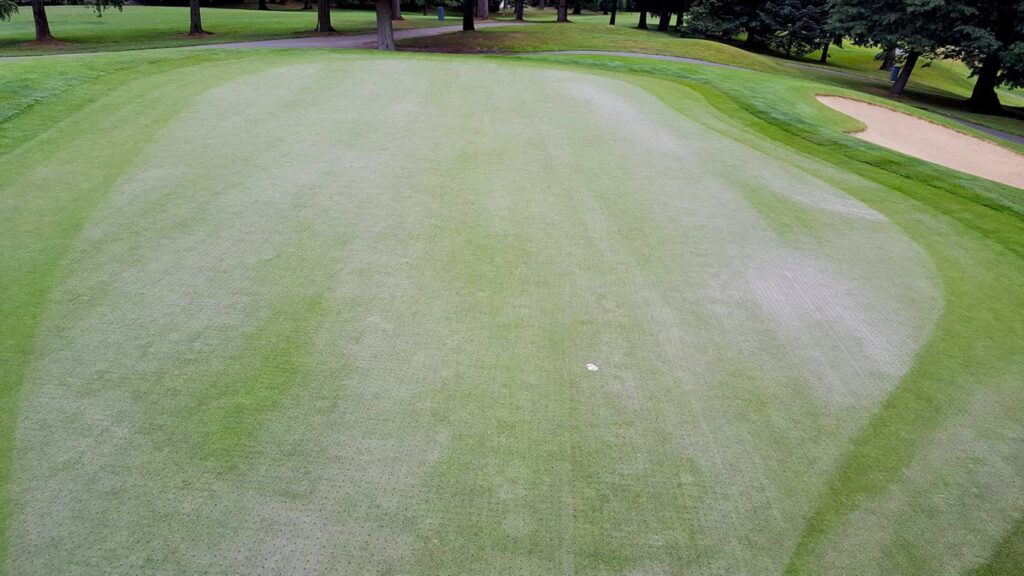
Over several years, the use of this technique can radically improve the soil characteristics of the playing area.
Topdressing Material: Deciding what material to use for topdressing is one of the most important long-term management decisions for the Superintendents.
The most commonly observed problem is the formation of various alternating layers of soil when different top dressing materials are used over time. The differences in textural characteristics between layers of sand and organic matter result in poor root growth, caused by physical barriers, the lack of oxygen, the entrapment of toxic gases, micro perched water tables, and dry zones.
Make sure the sand particle matches in shape and size and compatible with the existing soil medium to maintain even water distribution in the soil profile. If the sand is a finer in particle size than the size used in construction of the green, then it can create layering and have a negative impact on water infiltration. This is known as perched water table and can be very difficult to get rid of.
Fine textured soils high in clay and/or silt predominate on most undesirable playing surfaces. A coarser soil texture, most notably sand, is introduced to improve water percolation and aeration.
Current trends involve frequent topdressing with medium-fine (0.25 to 1.0 millimeter [mm]) sand. This size is usually coarse enough to change soil texture and fine enough to be easily worked into the turf surface.
The sand should be tested in a competent soil testing laboratory before attempting to slowly changing the soil profile and root zone of a green or tee.
Only weed-free materials should be used for topdressing. If the material’s origin is not known, or if it has been piled and exposed over time, fumigation is highly recommended before use. Washed sands may not need sterilization before use but should be closely inspected to determine whether this is needed. Excess topdressing material should be properly stored to keep it dry and uncontaminated.
Suggested Products: Toro Propass 200, MH400, Workman HDX mount Top dresser 1800
ROLLING:
Rolling of turf is performed at various intervals primarily to help smooth putting surfaces and increase green speed for daily play or tournaments.
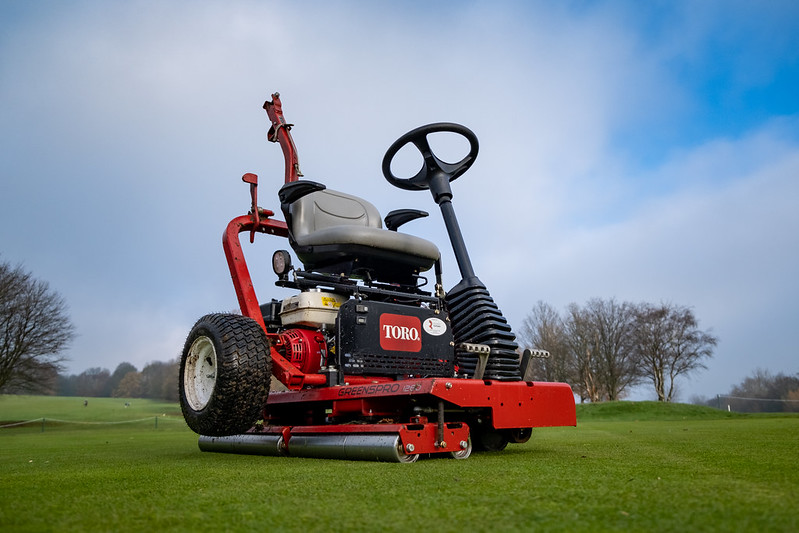
Periodic Rolling of a putting green can increase putting speeds by approx.10% allowing for improved ball roll, without lowering the height-of-cut
By increasing green speed, rolling may reduce mowing frequency and thus the stress of mowing.
Rolling also helps improve smoothness of the ball roll by pushing down imperfections
It can also be used to smooth the surface and remove dew in late or early season periods when little shoot growth is occurring.
As with all cultural practices, rolling should be done under the appropriate field conditions in order to reduce stress.
Rolling should not be attempted when the soil is saturated, because moisture acts as a lubricant and allows the closer association of soil particles. Extra aerification to relieve any soil compaction may be required.
Suggested Products: Toro Greenspro 1260
For more details reach us at:
Email: info@ipi-india.com
Website: https://www.ipi-india.com/golf-course-management.php
